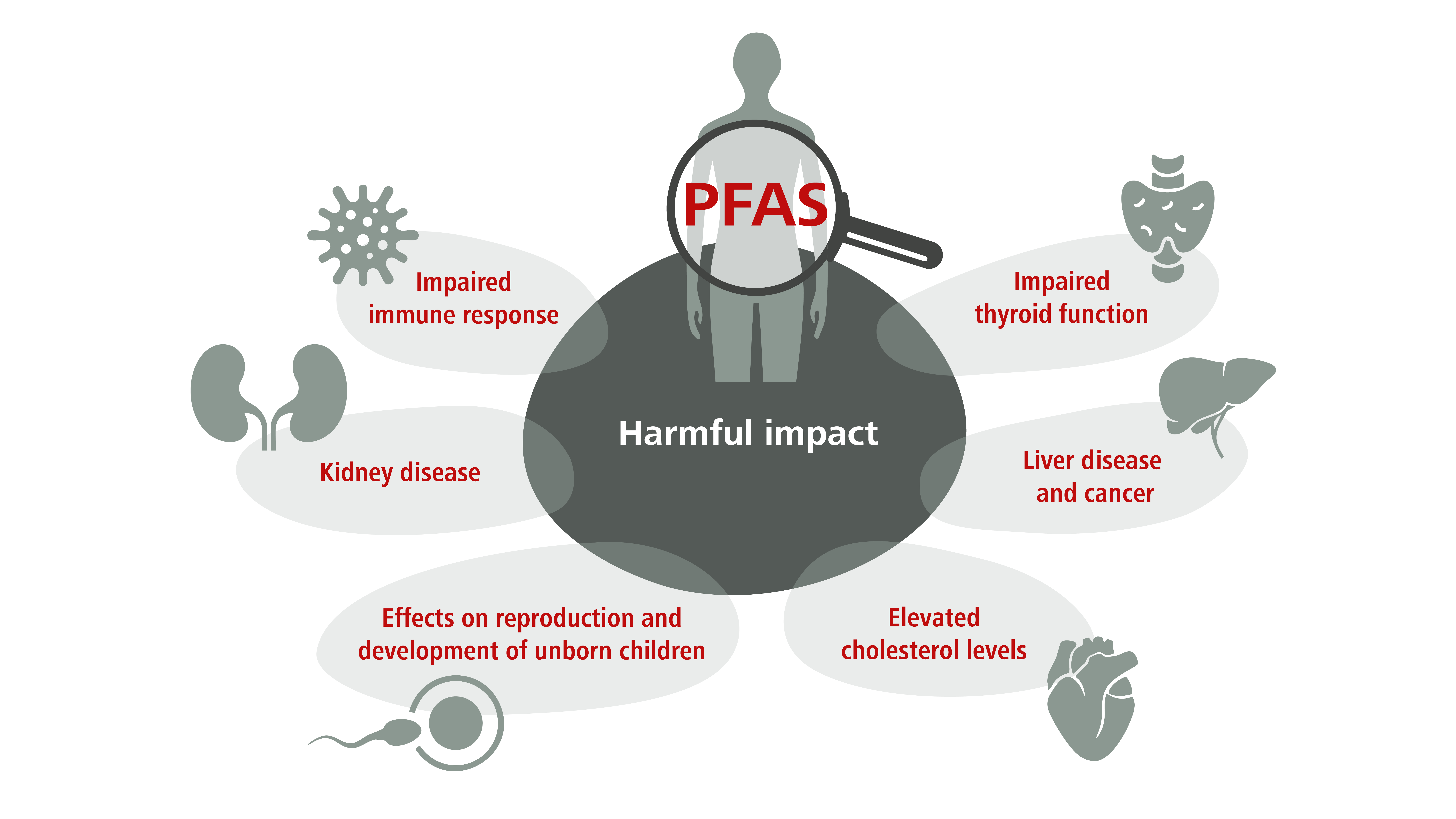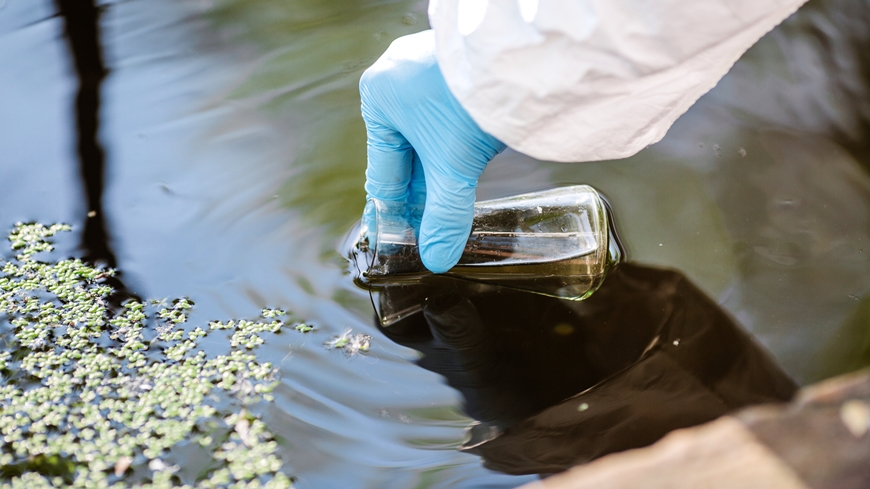Risks of PFAS for health and the environment
PFAS are associated with various diseases and environmental damage. Research is being conducted at Empa, Eawag and the Ecotox Center to better understand these effects on humans, our drinking water and the entire biosphere.

What problems do PFAS cause for humans and the environment?
The short and long-term effects of most PFAS in the environment and on human health are not yet fully understood. What is clear is that PFAS accumulate in the human body, in organisms such as animals and plants and in sediments. PFAS are therefore also found in the food chain. Humans absorb PFAS primarily through food, but also through drinking water.
In Switzerland, limit values for drinking water are defined in the TBDV, the Ordinance on Drinking Water and Water in Publicly Accessible Baths and Shower Facilities. The TBDV currently lists three individual substance limits for PFAS:
PFOS: 0.3 micrograms per liter
PFHxS and PFOA: 0.5 micrograms per liter
In the EU, the EU Drinking Water Directive sets corresponding limits. The current limit value for PFAS compounds here is 0.1 micrograms per liter of drinking water and comprises the total of 20 PFAS compounds.

PFAS risks to human health
In principle, larger PFAS molecules remain in the body significantly longer than short-chain PFAS molecules. They have a half-life of several years compared to weeks or days for shorter PFAS molecules.
However, well-studied PFAS molecules in particular are associated with an increased risk of cancer (such as kidney and testicular cancer), reduced vaccination success, increased cholesterol levels and effects on human development and the endocrine system.
In 2020, the European Food Safety Authority (EFSA) published a risk assessment for human health with respect to PFAS in food. This focused on four better-studied PFAS: perfluorooctanoic acid (PFOA), perfluorooctane sulfonate (PFOS), perfluorononanoic acid (PFNA) and perfluorohexa-nsulfonic acid (PFHxS). According to EFSA scientists, children and infants have the highest exposure to PFAS. PFAS exposure in infants is mainly due to exposure during pregnancy and breastfeeding. Of all the effects assessed in humans and animal models, the effects on the immune system were considered to be most severe.
To avoid adverse health effects, an upper limit of 4.4 nanograms per kilogram of body weight per week was set for the total intake of the four PFAS mentioned above.
PFAS risks for the environment
Depending on their molecular properties, PFAS accumulate in the food chain and are therefore mainly ingested via animal-based foodstuff. For this reason, predators and omnivores, such as wild boar or carp, are particularly affected in nature, according to current knowledge. However, there are initial indications that certain PFAS can also have an effect on fish and small crustaceans, even in low concentrations. The mechanism of action is not yet known, though.
The Ecotox Center regularly reviews Swiss quality standards – also in international comparison – to ensure that they are up to date. It develops quality criteria for surface waters, sediments and soils. For example, the Ecotox Center is involved in updating the EU Water Framework Directive. The directive proposes a much stricter quality standard for water bodies of 4.4 nanograms of PFAS per liter, which includes up to 24 PFAS compounds and whose inclusion in the current directive is currently being discussed.
A selection of research projects on the effects of PFAS
Guideline values for PFAS in soils
www.oekotoxzentrum.ch/projekte/bodenoekotoxikologie/richtwerte-fuer-pfas-in-boeden
PFAS analysis in two river sediments near the La Rama fire training area
Water quality in Lake Geneva
www.oekotoxzentrum.ch/projekte/aquatische-okotoxikologie/wasserqualitaet-im-genfersee
Sediment quality in Swiss streams – application of the new assessment strategy
Pocket Facts 02
(In)famous Allrounder:
PFAS – Forever Chemicals
Download the brochure
Dr. Alexandra Kroll
Ecotox Center, Risk Assessment
Phone +41 58 765 5487
-
Share
